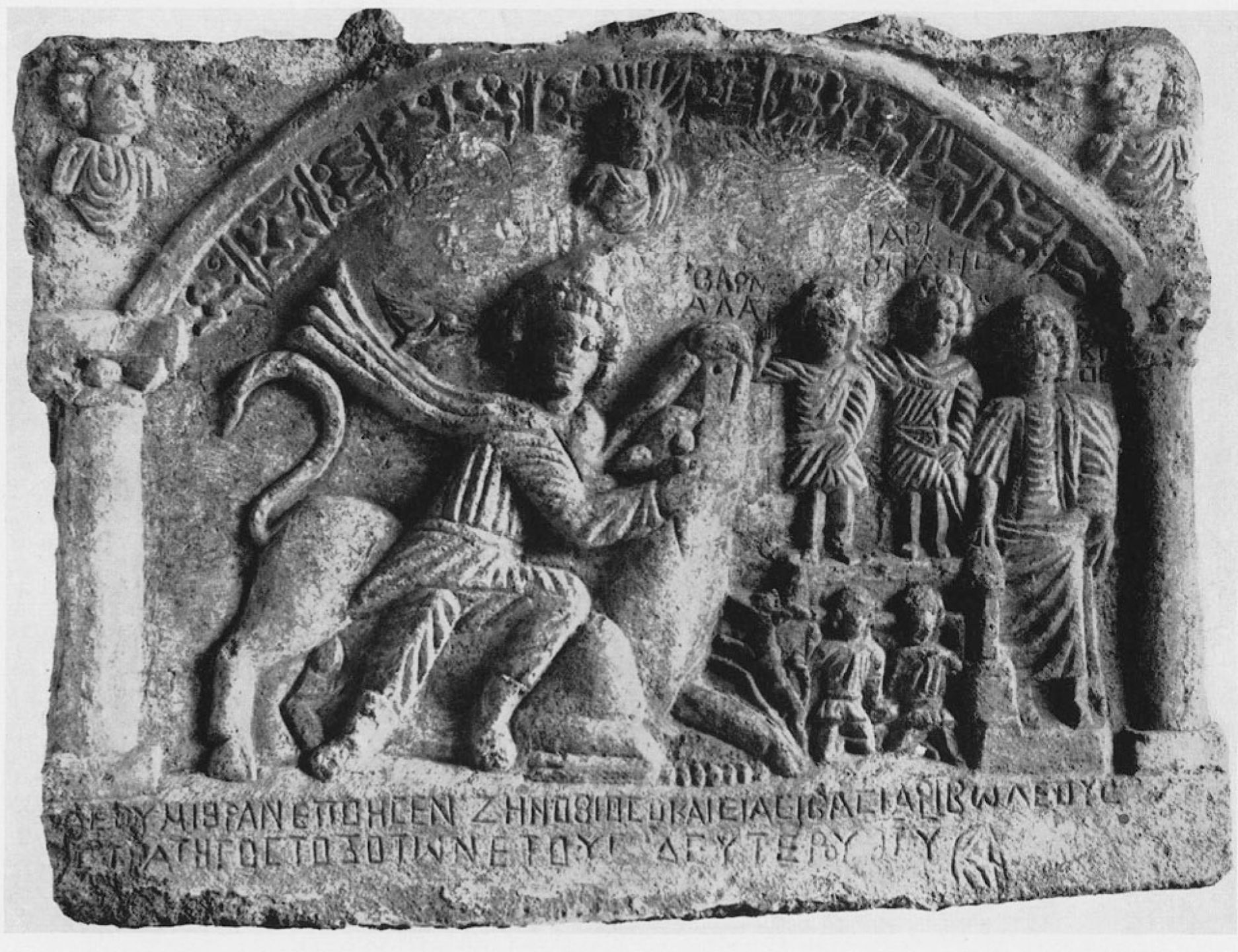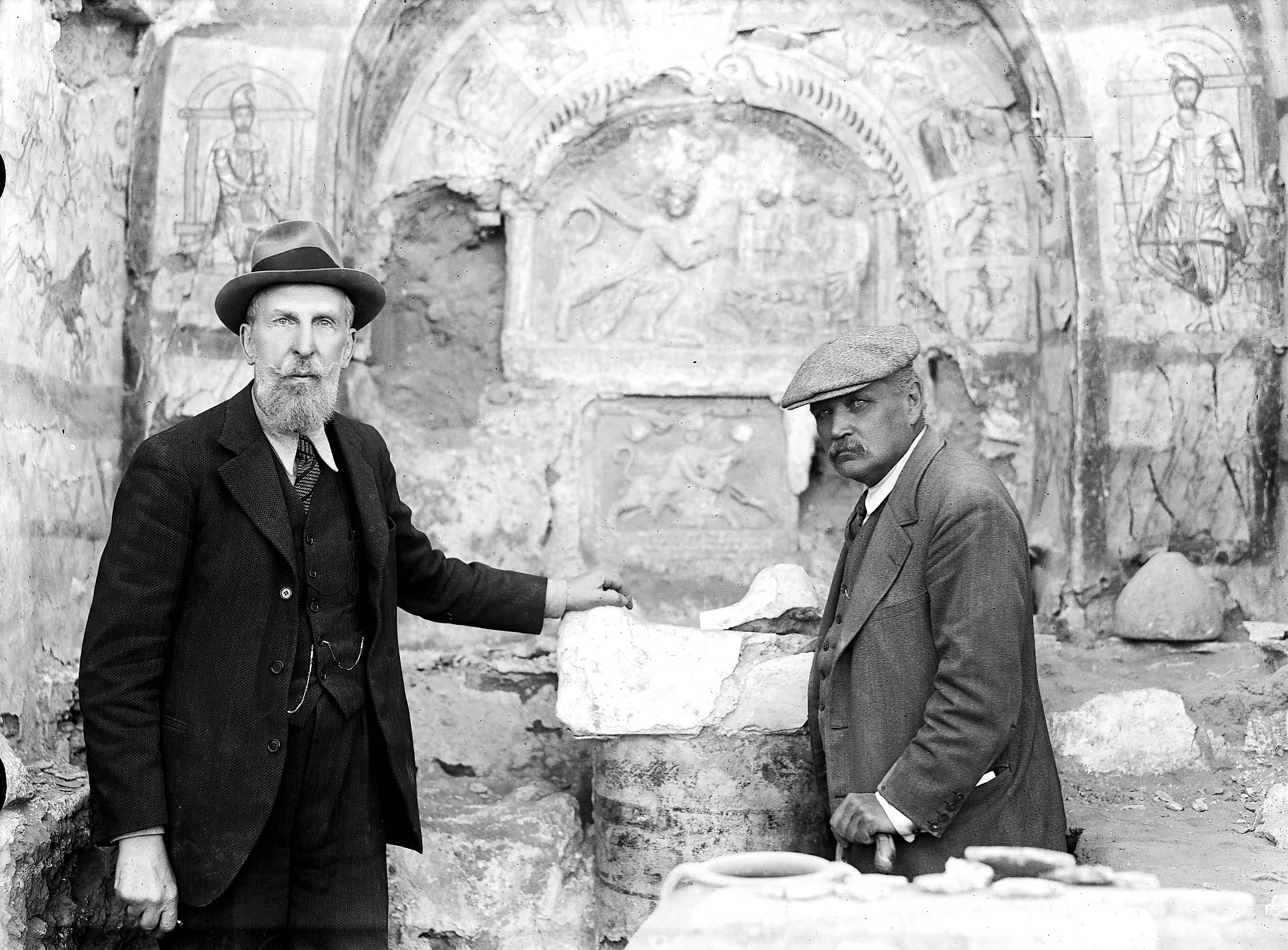
Zenobios
Zenobiοs Eiaeibas
Alias Ζηνόβιος
Commander of the archers at Dura Europos, he financed the second Tauroctony.
Biography
of Zenobios
- Zenobios was a syndexios of the Mithraeum of Dura Europos.
- Active c. 170 – 171 in Dura Europos, Syria-Coele (Syria).
TNMP 74
Two years after Ethphani, Zenobios financed a second and bigger relief of Mithras killing the bull which was found above his bother's.
An incription on the relief tells us more about Zenobios. He was also called Iahiba. He was the son of Iarhiboles, commander (strategos) of the archers.
He is depicted on the main relief of Mithras Tauroctonos as a man burning incense on a perfume burner in the presence of two other individuals, Iarhiboles and Barnaadath, standing on a small platform and raising their right hands in acclamation. Below them are two small kneeling figures.
His presence on the relief with four other men, while unique in the Mithraic iconographic corpus, corresponds to the local custom of representing the donor and his family on offering stelae, as can be see on other cult reliefs from Dura and Palmyra.
In this case, Iarhiboles may be either the father or the son of Zenobios, unless he is a homonym. As for Barnaadath, whose name is not from Palmyre, it is not known whether he is related to Zenobios.
Zenobios, larhiboles and Barnaadath — whatever their possible family ties —are rather codoners of the relief, members of the same military unit, the last two possibly accompanied by their own sons.
References
Mentions
Main Tauroctony relief from Dura Europos
TNMM 298
The main relief of Mithras killing the bull from the Mithraeum of Dura Europos includes three persons named Zenobius, Jariboles and Barnaadath.
Mithraeum of Dura Europos
TNMM 34
The most emblematic of the Syrian Mithraea was discovered in 1933 by a team led by the Russian historian Mikhaïl Rostovtzeff.



Comments
Add a comment